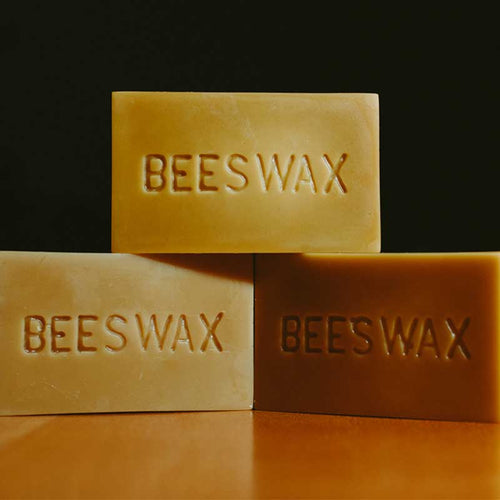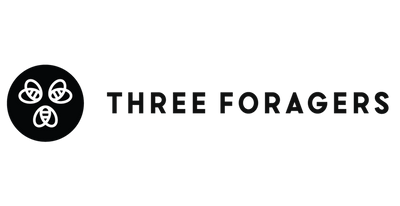

· By Three Foragers
How Is Beeswax Made?
It’s estimated that one out of every three bites of food is made possible because of bees and their ability to pollinate crops. This by itself makes bees some of the most incredible creatures on our planet! Surprisingly, they do even more for us. They also provide us with food in the form of delicious raw honey, which has tons of excellent health benefits, and also creates beeswax. The applications for beeswax are nearly endless. It can be used as a lubricant, an ingredient in skin products, and for making beeswax candles.

How Bees Make Wax
Worker bees that are younger than 18 days old are the best wax producers. During this time, a bee secretes beeswax from eight special glands located on its abdomen. The wax comes out colourless and quite brittle. After 18 days, these glands begin to atrophy.
The bee then uses its legs to move the wax from its abdomen to its mouth where it starts to chew on it, adding saliva softens it up. During the process, the beeswax picks up bits of honey, pollen, and propolis which darkens its colour.
Now having a pliable construction material, the worker bees use the beeswax to build the familiar hexagonal honeycomb that makes up the insides of beehives. Bees use these combs for honey storage and to raise their young! Surplus honey produced by the hive is stored in these honeycombs and is then capped by more beeswax for safekeeping.

Sealing each hexagonal cell in honeycomb serves to keep moisture and debris from entering the honey. Keeping water out of the honey is very important, if the moisture percentage is too high, then the honey will spoil and ferment.
How Beeswax Is Collected
We harvest beeswax at the same time that we collect our raw honey. First, we pull the beehive frames that are full of honey and capped with beeswax. Next, we scratch off the wax that is covering the honeycomb, exposing the delicious raw honey. We place the frames in a centrifuge that extracts the honey along with bits of this scratched beeswax. By collecting beeswax this way, our honey farm can only harvest less than one pound per hive each season!
The collected wax is melted and filtered to remove any impurities. What’s left is incredibly pure, natural beeswax. While there are numerous uses for beeswax, we’ve recently been making beeswax candles! Beeswax is superior to other waxes for making candles as it burns longer and brighter. When burning, beeswax can produce negative ions that latch onto harmful household chemicals that are airborne. Once the negative ions produced by burning beeswax bond with the airborne toxins, they descend to floor level, essentially purifying the air! These harmful toxins come from a range of varying products including furniture protectant, aerosols, paint, formaldehyde, even non-beeswax candles produce harmful byproducts!
Honey bees are the most prolific honey makers on the planet. We make sure that we only take the surplus honey and beeswax from the hives so that our bees can thrive! If you have any questions about how we collect honey, beeswax, or any of our products, leave us a comment below or on Facebook, and we’ll be sure to get back to you!
Share:
3 comments
-
There is alot of great information in this article. I found out many things I did not know. Thank you so much for the information. Jewels
Jewels Kublank on
-
good
it helped me a lot for my presentation.h on
-
good,helped a lot to write for my essay thank you sm
7 on
